Aquatic Parallels
Observing the strikingly humanlike behavior of animals at the New England Aquarium
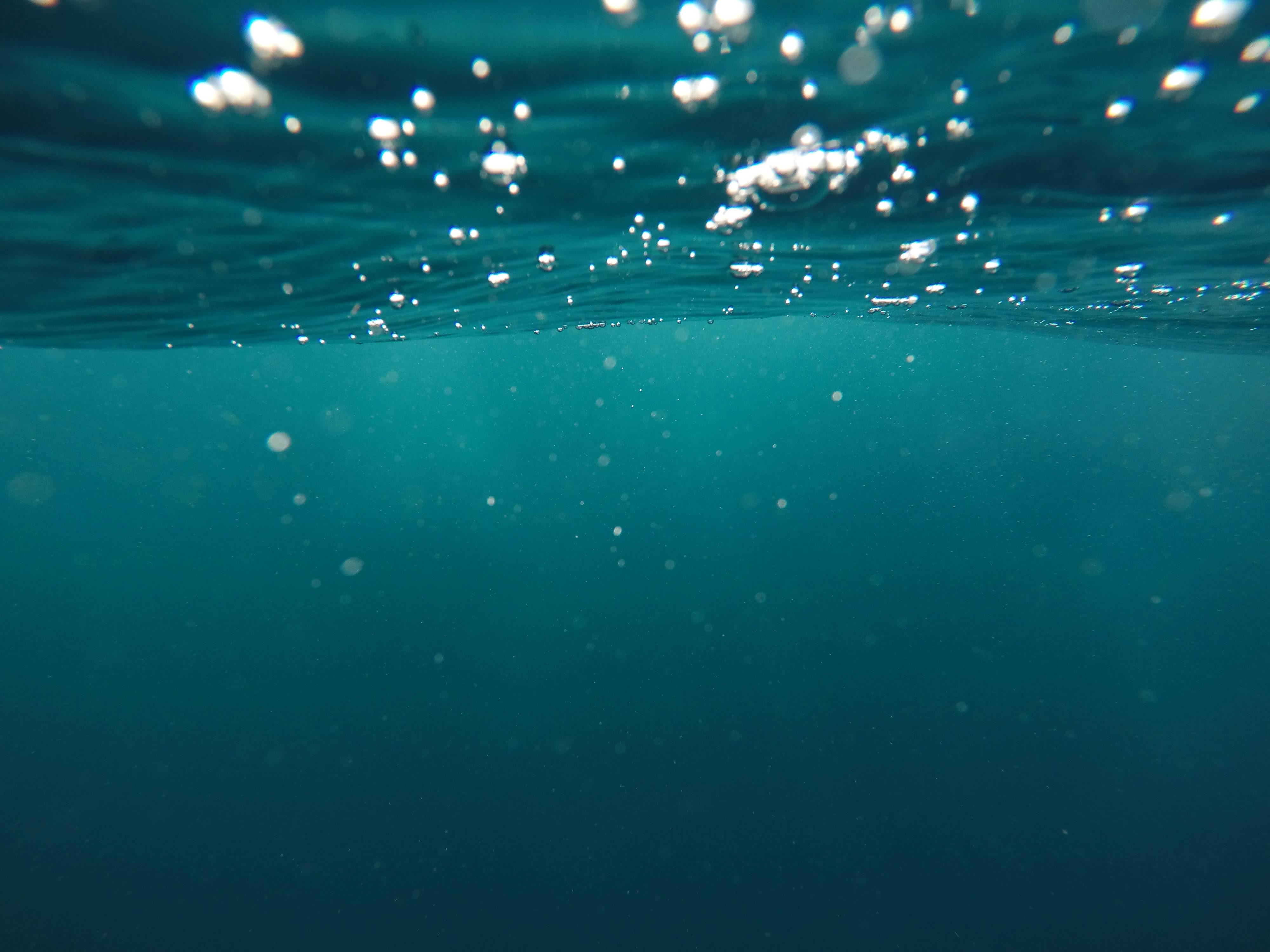
Boston, MA
October 2022
Overcast sky, pleasant temperatures, bustling streets
Arriving at the Aquarium
The building was unlike any of the others in the Central Wharf district - a four-story dome encased in an irregular shell of stainless steel tiles.
If the smog weren’t so thick and the sun was shining, I’d imagine that the waters of the Boston Harbor would cast dazzling light patterns on these tiles, like silvery fish scales.
Emblazoned on one of the building’s peculiar facets was a tall mural of an ornate mandala surrounding the planet Earth, and a right whale swimming in the ocean beneath it. Its brilliant blue hues cut right through the pervasive gray haze as easily as a lighthouse beacon.
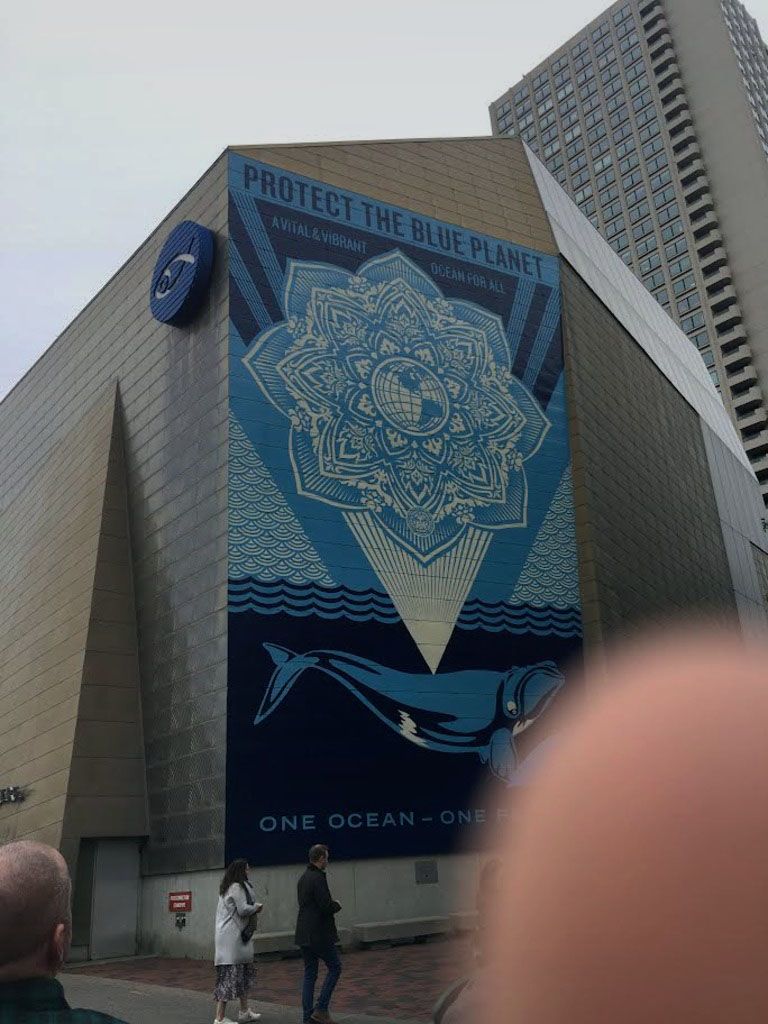
Inside
The interior of the dome had a spiral ramp that went up the whole four stories, walls lined the whole way with tanks filled with colorful fish and sea critters.
I felt like a kid again, watching all the fish dart about in their tanks. Seeing them in real life instilled a sense of awe in me that’s tough to replicate if you’re just looking at pictures of them online.
Also like a kid, I engaged my imagination, trying to picture what these animals were thinking as I watched their behaviors. It’s fascinating how much of their thoughts and actions seem to be similar to those of human beings, considering how separated we are from other species in our day-to-day lives.
The Penguin Islands
When me and my family entered the building, we were greeted by a massive pool of deep teal water, dotted with many rocky islands.
These islands were home to two colonies of penguins: talkative African penguins, and sassy southern rockhoppers with their bombastic yellow “eyebrow” crests.
The way the penguins behaved when people pulled their cameras out was unexpectedly humanlike, and varied based on their individual personalities and goals. Some penguins stood up and puffed their chests out, stubby wings outstretched, like they were showing off for photos. The rockhoppers seemed well aware of their wild hairdos, and eager to show them off to anyone who would humor them.
Some of them got defensive instead, braying in defiance at the tourists, determined to protect their islands from all those noisy strangers.
Others were indifferent to the crowds, content to ignore them, preen their feathers, and bathe by the water sprinklers instead.
Observing them was similar to watching how people react to having their picture taken. Some of us get anxious, while others carry on about their business as normal, and yet others are more than happy to smile or pose for the camera.
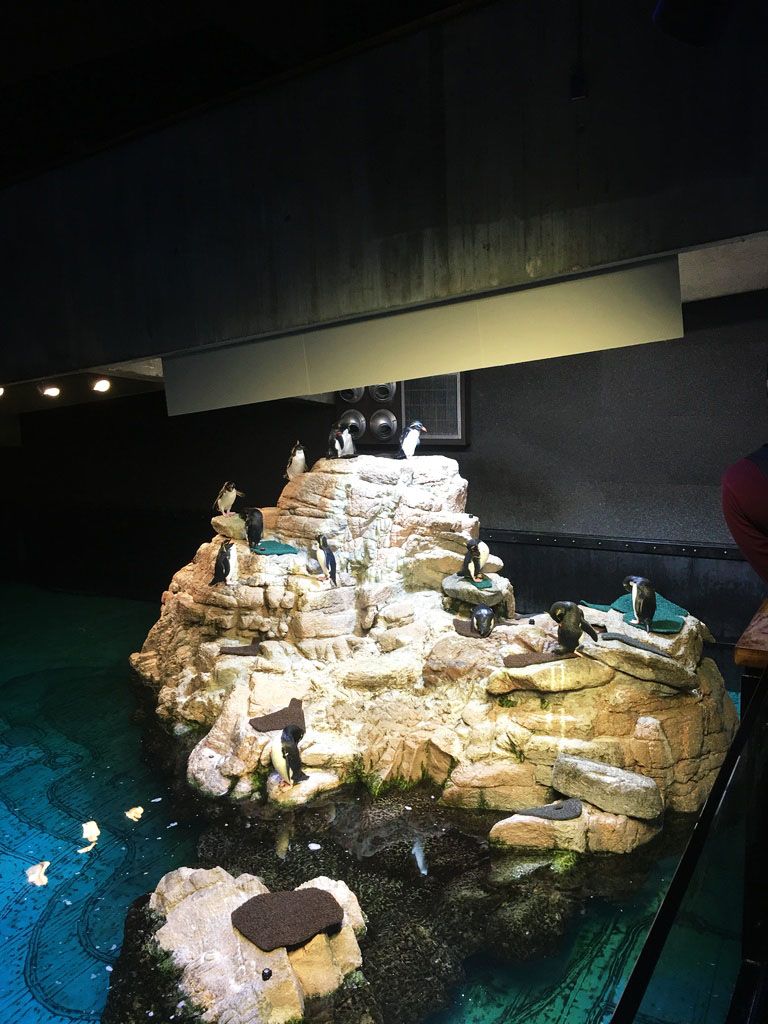
The Anemone Tank
One tank held a whole meadow of sea anemones. There had to have been at least fifty of them in the one tank.
As they swayed gently in the water, tentatively taking stock of their surroundings, they looked like a forest of trees from a Dr. Seuss book on a breezy day.
Sea anemones are usually solitary animals, which I assume would mean that they would fight each other for territory if one species got too close to another.
These anemones seemed like an odd case. Instead of making a fuss and trying to fight each other for space, the anemones allow each other to exist in peace, searching for their own food and doing their own thing without much apparent conflict.
It reminded me a little bit of the human phenomenon of parallel play, in which two people work on their own projects or hobbies in each others’ company - being alone together. It also mirrored how, even though we all have individual differences and might not always like each other, us humans can still form complex societies together and make space for one another.
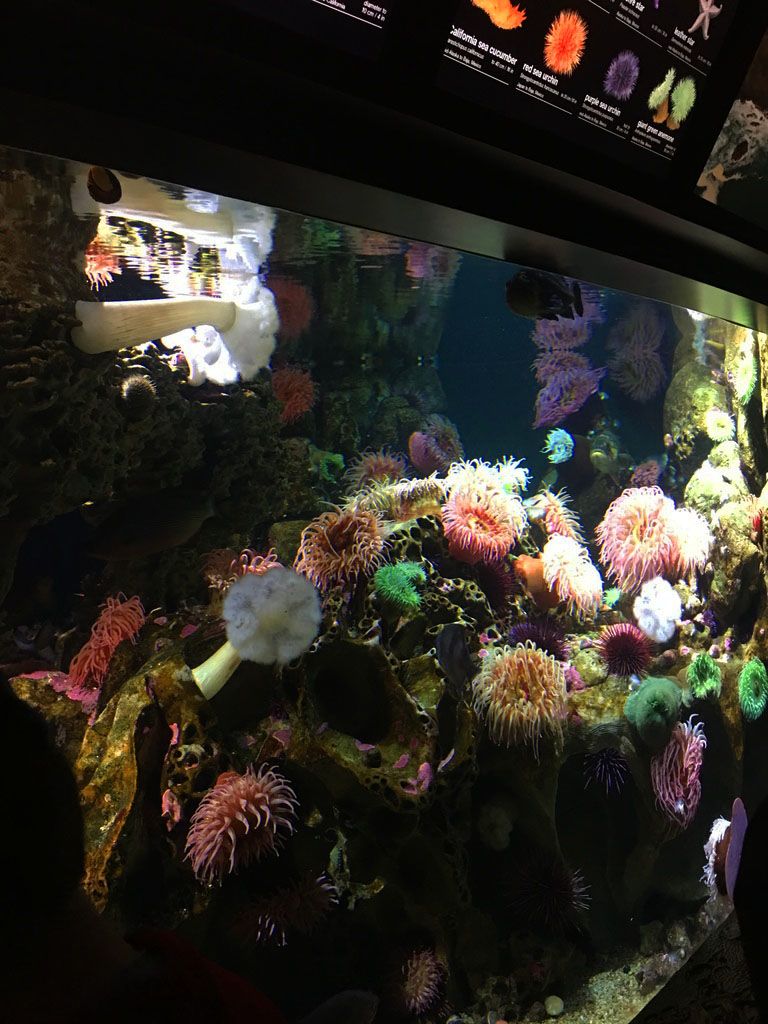
Myrtle the Sea Turtle
The giant ocean tank in the center of the complex was the star of the show, rising up the whole four stories of the building.
A green sea turtle named Myrtle drifted laps around the ocean tank, swimming in slow, graceful circles.
Upon doing research later, I found out that she had been at the aquarium since 1970. She’s in her eighties or nineties - a wise old woman!
As it turns out, Myrtle is part of an important research project; the data gathered from her checkups at the vet help researchers learn how to rehab sick and ageing turtles, and she has helped researchers find out how her species responds to underwater sounds.
As I watched Myrtle make her rounds around the tank, I had to wonder what was going through her head. There’s undoubtedly a lot of things she likes about living in the aquarium, from what I’ve read - taking naps at her special spots near the top of the tank, being fed fresh veggies by her caretakers, and having her shell scratched, just to name a few. She’s described by the aquarium staff as being “curious, playful, and bossy,” so she must be happy when surrounded by familiar faces.
But does she miss when she was young, roaming the open ocean without a care in the world? I wonder if she was once a daredevil of her species, braving the cold New England waters just to prove she could. I think there might be times when she lays at her napping spots, reminiscing about her rebellious youth, like a retiree thinking about their past achievements while sitting on their porch chair.
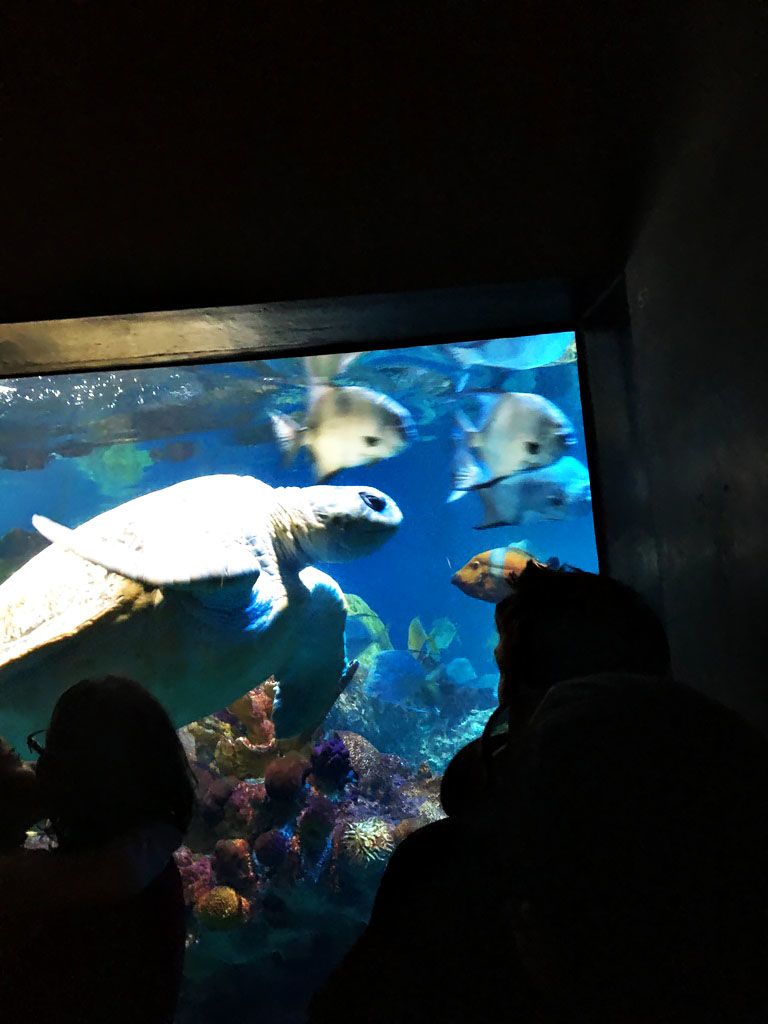
Thomas the Moray Eel
I caught sight of a green moray eel laying against one of the rocky walls of the giant ocean tank. He stood still as a statue, jaws hanging open, flashing his razor-sharp teeth.
Thomas, as the museum called him, needs to be hand-fed by his caretakers every day, just so he won’t try to munch on the fish he shares his tank with.
Now that I have some context behind Thomas’s somewhat prickly behavior, I can’t help but laugh a little, because he reminds me so much of myself.
There’s some days when I have to skip breakfast to rush to a class, whether I got distracted by something on social media and scrolled for too long, or because I missed my alarm clock. Then by the time I’m out of class, I’m involuntarily wearing a similar grouchy expression to Thomas’s, until I can catch my own prey - which is usually a falafel wrap from The Bear’s Den.

Afterthoughts
It’s remarkable how similar all these animals are to people, and yet so different at the same time. Each one seems to have their own internal world, shaped by unique goals, dreams, passions, and memories.
I can only hope that someday, we find a way to communicate with them more directly. I think a translation device that lets humans understand animal communication better could work wonders for things like environmental progress, conservation, and even pet care. Also, I just think it would be really cool to be able to talk to fish.
Sources
- https://www.neaq.org/animal/green-sea-turtle/
- https://www.neaq.org/feeding-the-giant-ocean-tank-animals/
- https://www.wbur.org/news/2024/06/12/green-sea-turtle-new-england-aquarium
